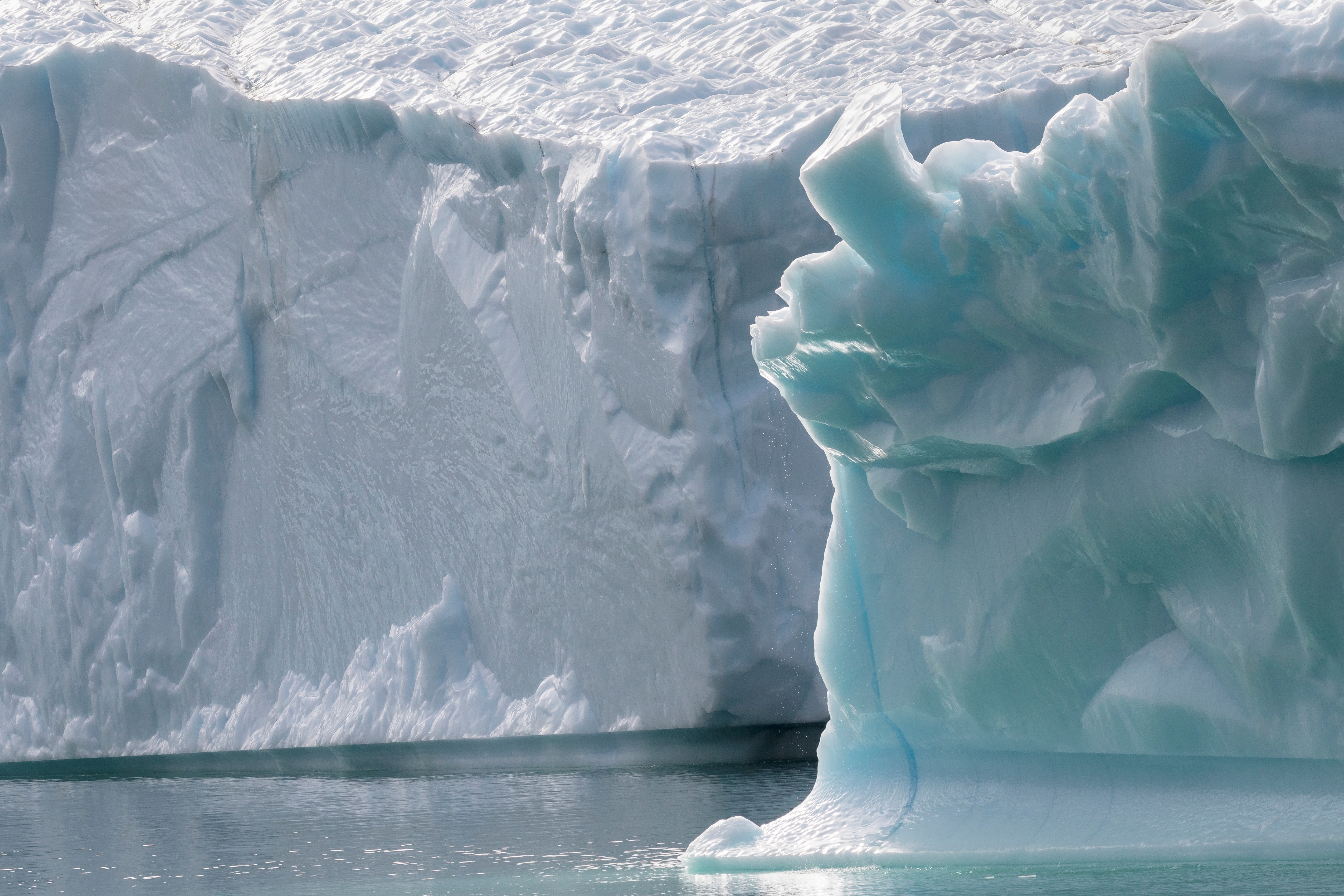
Refraction is a physical process that is essential to the way camera lenses work. There are certain, rare forms of blue iceberg that appear colored to our eyes to the refraction of the light falling upon it. Our eyes see this mixture of all the colors of the rainbow as white light. The sunlight falling on the icebergs is reflected back towards the viewer, or the camera, in the same proportions that it fell. Most of the icebergs we see in photographs are bright white. Work by Uwe Kils Ĭreative Commons CC BY-SA 3.0 Refracting Light Sea water contains salt and is even more dense than fresh water causing icebergs to float higher in the sea than they would in fresh water. This is because water ice is unusual among substances in that it is less dense in its solid form than it is as a liquid. Just as an ice cube floats in a drink, so icebergs float in the sea. They can also break off a large ice shelf such as those found at the Antarctic. Icebergs can also form as smaller lumps of ice breaking off a larger iceberg. Those parts of the glacier closest to the sea will eventually break off and may float away as icebergs. Glaciers are ‘rivers of ice’, gradually flowing towards the sea. They can start their lives as snow falling on the ground which compacts and forms part of a glacier. Icebergs are huge blocks of ice that form in a number of ways. On her website she has a large collection of her iceberg photography. She describes some of these icebergs as ‘young’ – those are the ones that are only a few thousand years old! Others are hundreds of thousands of years old. All iceberg artwork ships within 48 hours and includes a 30-day. In the video Camille Seaman describes how she photographs icebergs in Greenland. Shop for iceberg wall art from the Getty Images collection of creative and editorial photos. Camille Seaman has taken some amazing photographs of icebergs and, in this video, shows us some of them and talks about her work.Īfter you’ve watched the video, scroll down the page to the links to other amazing iceberg photographs. Get your stickers here on Etsy.Icebergs are beautiful, stunning and powerful. Want to join in on the #TipTheIceberg activism? Megan Thompson-Munson obviously has you covered. While these were drawn on a laptop computer you may find it easier to draw on a tablet or mobile, which works great. Just refresh the web page to start a new iceberg drawing. And I can confirm: the heart-shaped iceberg stays upright. So head on over to Iceberger and go crazy with your drawings.īelow you can have a look at some of my attempts. And sometimes how an iceberg floats can be really hard to predict. Because obviously you can draw your iceberg any which way you want.

"Will it tip"? - an iceberg solitaire game Tauberer writes: "three-dimensional distribution of mass and its relative density compared to the water are both significant factors that are only approximated here." But then again, the iceberg you draw will likely also be 2-dimensional. Obviously there are limitations to this simulation, as it isn't in 3D. Watch what happens as the iceberg topples. Here is me drawing one of those classic orientations. Find high-quality stock photos that you wont find anywhere else. He quickly coded an iceberg simulation, allowing you to draw an iceberg to see how it would actually float. Search from 99522 Iceberg stock photos, pictures and royalty-free images from iStock.
#Iceberg picture software#
This being the age of the Internet, Thompon-Munson's call for change was heard by Joshua Tauberer, a software developer and civic technologist. In a world already at the ready to twist and bend our perception of reality this seems a more than fair request. What Thompson-Munson proposes is this: "that scientific diagrams show stable orientations that are more likely to exist in nature". Here are some typical iceberg images from an image search online, all showing exactly how icebergs do not float: An elongated iceberg would not float on its head, but instead on its side. While it's true that only ~10% floats above the surface of the water, the "classic" orientation is unstable and would actually not be found in nature.


Thompson-Munson, who is a glaciologist and climate scientist, explains: The "classic" image of an iceberg is usually some kind of ice cream cone-shaped hunk of ice with 90% of it below the water's surface and 10% above (source: every iceberg stock photo on the internet). As it turns out, even the scientists have been getting it wrong all these years, which likely contributes to the appearance of all those strategic "tip of the iceberg"-diagrams. Early this year, Megan Thompson-Munson wrote a tweet petitioning for scientists to start drawing icebergs the way they actually float.


 0 kommentar(er)
0 kommentar(er)
